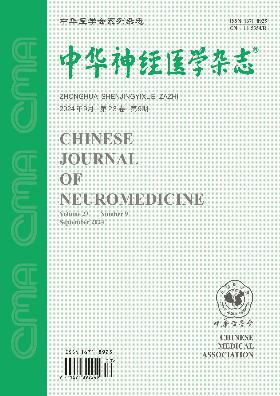直接抽吸首次通过取栓技术治疗动脉粥样硬化性急性颅内大血管闭塞的疗效和安全性
Q4 Medicine
引用次数: 0
摘要
目的探讨直接抽吸首次通过取栓术(ADAPT)治疗急性动脉粥样硬化性颅内大血管闭塞的疗效和安全性。方法选择2018年3月~ 2019年3月在我院行血管内治疗的急性动脉粥样硬化性颅内大血管闭塞患者72例;24例患者采用ADAPT技术,48例患者采用Solitaire支架联合半暗带吸管拔管技术。再通失败后采取了补救措施。改良术中脑梗死溶栓分级用于血管再通评价。术后3个月按改良Rankin量表(mRS)评分评定患者预后,比较两组患者的疗效和安全性。结果与Solumbra组比较,ADAPT组患者从股动脉穿刺到再流时间较Solumbra组短(P < 0.05)。Solumbra组和ADAPT组患者最终再通率分别为83.33%和75.00%,差异无统计学意义(P < 0.05)。两组预后良好患者比例、围手术期症状性颅内出血发生率及病死率比较,差异均无统计学意义(P < 0.05)。结论对于急性动脉粥样硬化性颅内大血管闭塞患者,血管内应用ADAPT技术与Solumbra技术治疗效果相当。关键词:动脉粥样硬化;急性颅内大血管闭塞;直接抽吸第一遍取栓技术;接龙支架联合半暗吸管拔管技术本文章由计算机程序翻译,如有差异,请以英文原文为准。
Efficacy and safety of a direct aspiration first-pass thrombectomy technique in treating atherosclerotic acute intracranial large vessel occlusion
Objective
To investigate the efficacy and safety of a direct aspiration first-pass thrombectomy (ADAPT) technique in treating acute atherosclerotic intracranial large vessel occlusion.
Methods
Seventy-two patients with acute atherosclerotic intracranial large vessel occlusion underwent endovascular treatment in our hospital from March 2018 to March 2019 were chosen in our study; ADAPT technique was used in 24 patients, and Solitaire stent combined with penumbra suction catheter extraction (Solumbra) technique was used in 48 patients. Remedial measures were adopted after the failure of recanalization. Modified intraoperative cerebral infarction thrombolysis grading was used for vascular recanalization evaluation. The prognoses of the patients were determined according to modified Rankin scale (mRS) scores 3 months after operation, and the efficacy and safety of the patients in the two groups were compared.
Results
As compared with patients in the Solumbra group, patients in the ADAPT group had statistically shorter time from femoral artery puncture to reflow (P 0.05). The final recanalization rates of patients in Solumbra group and ADAPT group were 83.33% and 75.00%, without statistically significant difference (P>0.05). There was no significant difference in proportion of patients with good prognosis, incidence of perioperative symptomatic intracranial hemorrhage and mortality between the two groups (P>0.05).
Conclusion
For patients with acute atherosclerotic intracranial large vessel occlusion, endovascular treatment with ADAPT technique is comparable with Solumbra technique.
Key words:
Atherosclerosis; Acute intracranial large vessel occlusion; A direct aspiration first-pass thrombectomy technique; Solitaire stent combined with penumbra suction catheter extraction technique
求助全文
通过发布文献求助,成功后即可免费获取论文全文。
去求助
来源期刊

中华神经医学杂志
Psychology-Neuropsychology and Physiological Psychology
CiteScore
0.30
自引率
0.00%
发文量
6272
期刊介绍:
 求助内容:
求助内容: 应助结果提醒方式:
应助结果提醒方式:


